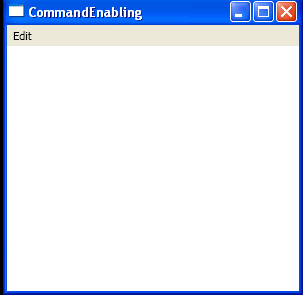Binding command to ApplicationCommands.Redo

<Window x:Class="WpfApplication1.Window1"
xmlns="http://schemas.microsoft.com/winfx/2006/xaml/presentation"
xmlns:x="http://schemas.microsoft.com/winfx/2006/xaml"
Title="CommandEnabling" Height="300" Width="300"
>
<Grid>
<Menu VerticalAlignment="Top">
<MenuItem Header="_Edit">
<MenuItem Command="Redo" />
</MenuItem>
</Menu>
</Grid>
</Window>
//File:Window.xaml.cs
using System;
using System.Collections.Generic;
using System.Text;
using System.Windows;
using System.Windows.Controls;
using System.Windows.Data;
using System.Windows.Documents;
using System.Windows.Input;
using System.Windows.Media;
using System.Windows.Media.Imaging;
using System.Windows.Shapes;
namespace WpfApplication1
{
public partial class Window1 : System.Windows.Window
{
public Window1()
{
InitializeComponent();
CommandBinding redoCommandBinding = new CommandBinding(ApplicationCommands.Redo);
redoCommandBinding.CanExecute += RedoCommandCanExecute;
CommandBindings.Add(redoCommandBinding);
}
void RedoCommandCanExecute(object sender, CanExecuteRoutedEventArgs e)
{
e.CanExecute = DateTime.Now.Second % 2 > 1;
}
}
}
Related examples in the same category